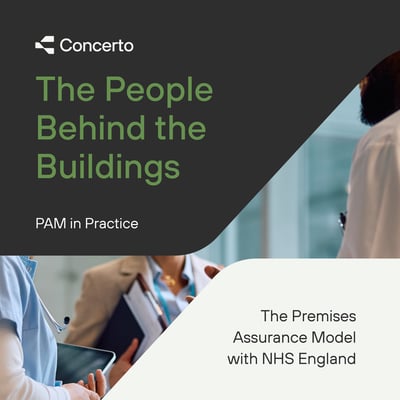
Beyond the buildings: PAM with NHS England
Pam in practice: Unlocking the potential of NHS estates
How data, technology and people are transforming the future of healthcare environments
In the latest episode of our podcast series, Pam in Practice, we sat down with Fiona Daly, Director of Estates, Sustainability and Workforce and National Deputy Director of Estates for NHS England, to explore the evolving role of the Premises Assurance Model (PAM) and how digital innovation is reshaping the NHS estate.
Hosted by Matt Blanchard (GovNews) and Matt Hickley (Bellrock), the conversation dives deep into how NHS estates teams can use PAM to unlock greater safety, efficiency and resilience across the built healthcare environment.
Meet our guest: Fiona Daly
With over 17 years of experience in NHS estates, Fiona leads strategies to decarbonise, digitise and modernise the NHS's physical infrastructure. She also oversees the wellbeing and progression of the 125,000-strong NHS estates and facilities workforce.
Her passion? Creating healthy, sustainable spaces that reduce health inequalities and support high-quality patient care.
NHS estates at a glance
The scale is staggering:
- 10,000+ NHS buildings
- 27 million square metres of estate
- Spanning acute hospitals, mental health units, community clinics, diagnostic centres and GP practices
- Managed by over 210 independent NHS organisations
Yet despite the scale, the challenges are equally large; most notably the £13.9 billion maintenance backlog, the pressure of rising demand and the need to reach net zero by 2040.
What is PAM and why does it matter?
PAM (Premises Assurance Model) is one of three critical data collections in the NHS:
- ERIC – the Estates Return Information Collection (core metrics)
- PLACE – patient-led assessments of the care environment
- PAM – a framework for assurance, compliance, and governance
PAM helps Trusts and NHS England understand how well estate-related risks are being managed covering everything from safety and policies to governance structures and sustainability.
“Well-led organisations already hold this information. PAM is about creating a standardised, streamlined format to assure Boards and improve performance.” — Fiona Daly
Key challenges for NHS estates teams
- Balancing compliance with transformation
Estates teams must ensure buildings are safe and compliant while adapting to changing clinical needs and planning for digital, net zero and workforce goals. - Managing rising demand
With 30 million more patient visits in 2024 vs. two years ago, without significant infrastructure change, capacity planning is more critical than ever. - Ensuring high-quality data
All the dashboards and AI tools in the world are only as good as the data feeding them. Fiona emphasised that “getting the data right” is the number one priority.
From analogue to digital: The road ahead
With a growing digital agenda across the NHS, Fiona sees data and automation as central to the transformation of NHS estates over the next decade.
Key enablers include:
- Automated CAFM and smart building integrations
- Data-driven decision-making
- Predictive maintenance via AI
- Real-time reporting of PAM metrics
- Linking estates data with clinical systems for deeper insights
Bellrock's own Concerto software is helping NHS Trusts streamline PAM submissions, reduce manual effort and unlock more proactive estate management.
The role of collaboration and innovation
Fiona underscored the importance of:
- Leveraging innovation from the private sector, especially FM suppliers with smart systems
- Linking disparate systems through APIs for integrated insights
- Upskilling estates teams with digital and data literacy
- Creating secure, interoperable data ecosystems
She also called for more consistent national, local and system-level adoption of tools and platforms to enable shared progress and benchmarking, both within the UK and internationally.
Looking to the future: A smarter, greener NHS estate
What's next?
Over the next 5–10 years, Fiona sees a transformation driven by:
- Predictive analytics and AI
- Digital twins and augmented reality for maintenance and training
- Wearable tech to support staff wellbeing
- Automated benchmarking across NHS trusts and global systems
- Smarter capital investment based on real-world asset performance
“We know the future's digital. The question is: what will we adopt, when, and how can we ensure our people are ready for it?” Fiona Daly
Final takeaway
If there's one thing Fiona would change about PAM today, it's this: data quality. Getting the data right is the foundation for every insight, every investment decision and every step toward smarter estates.
The People Behind the Buildings
The new podcast on the block, for all the estate and property geeks to listen to on their lunch break.


